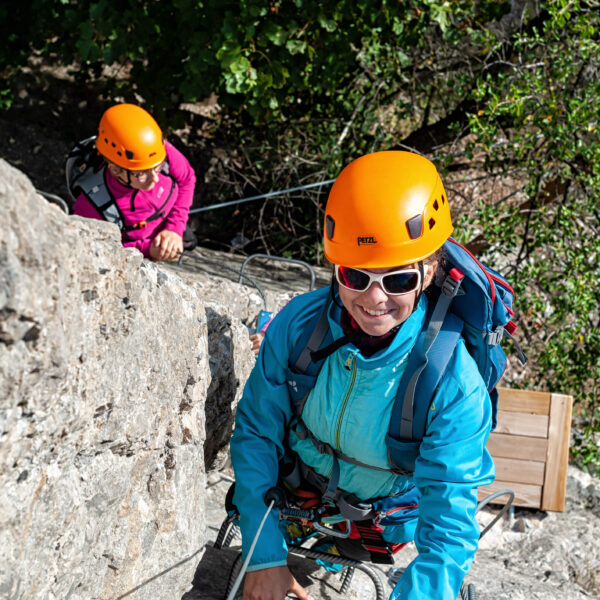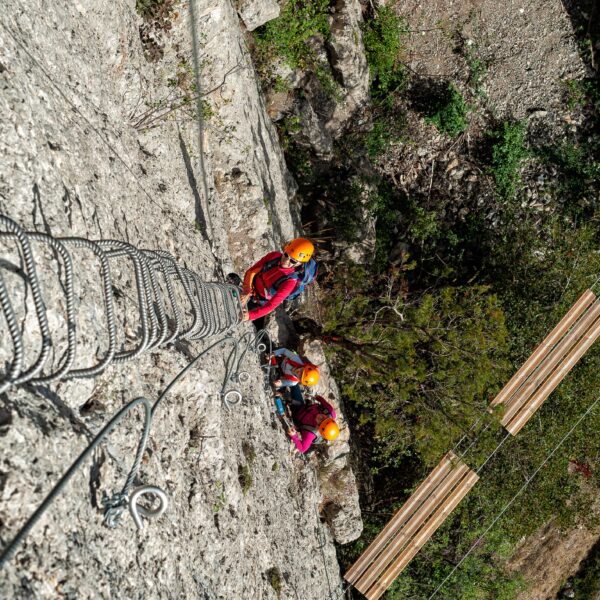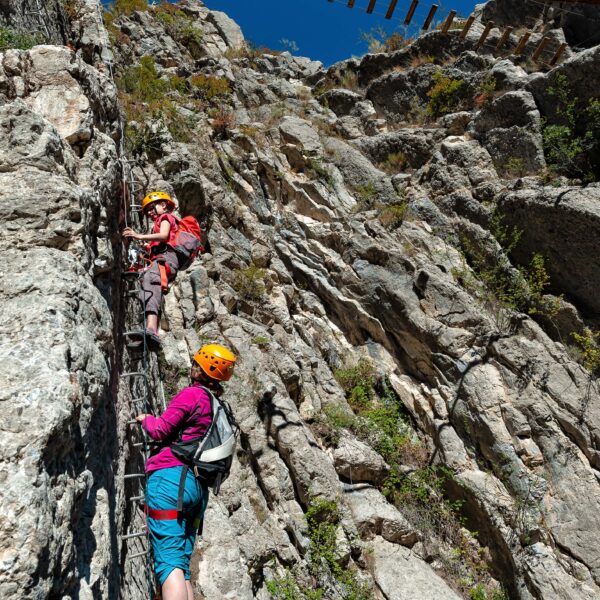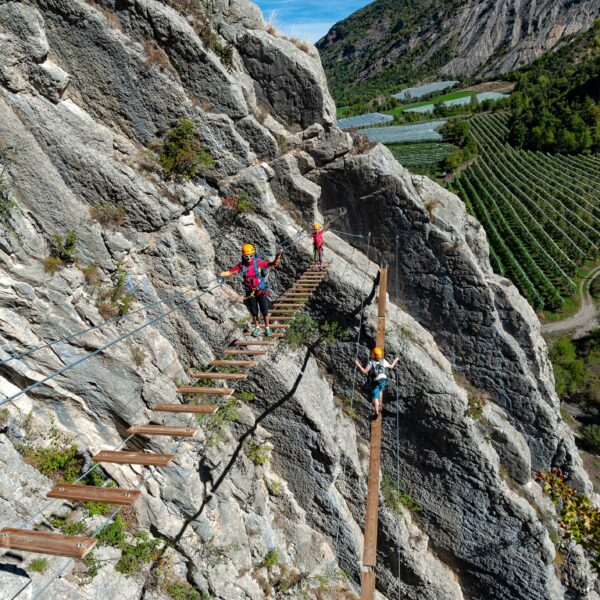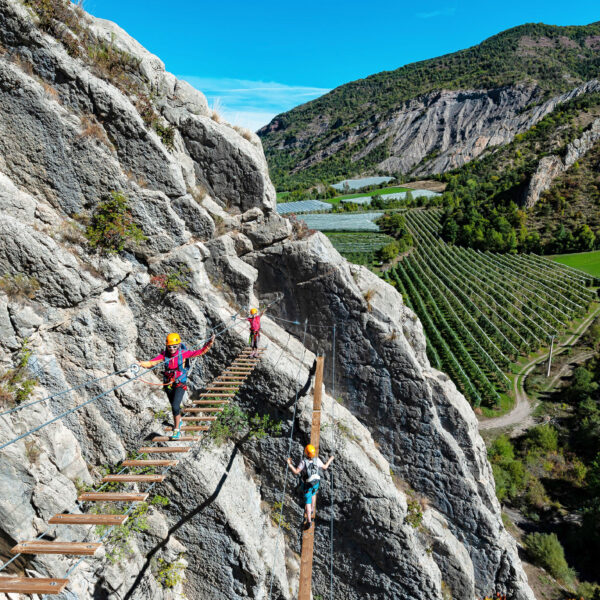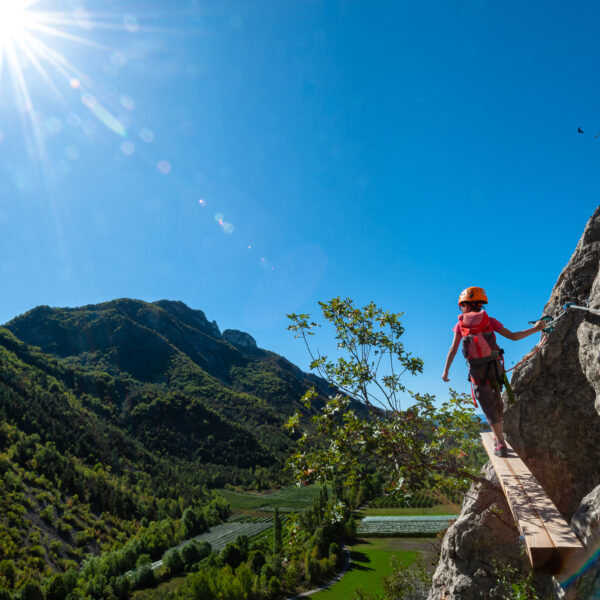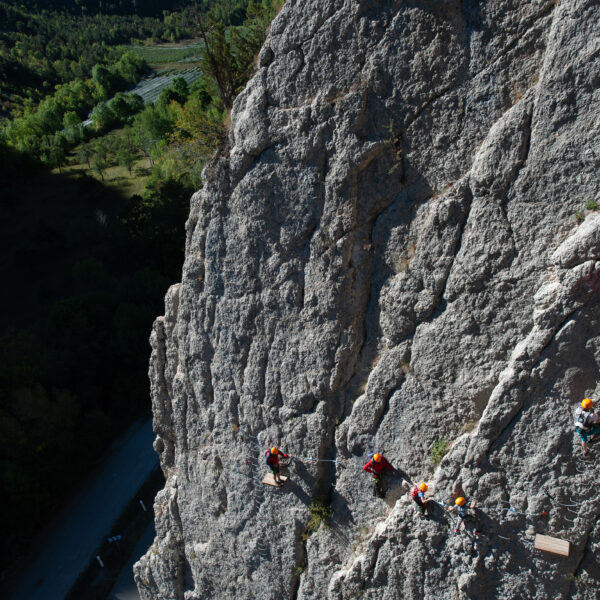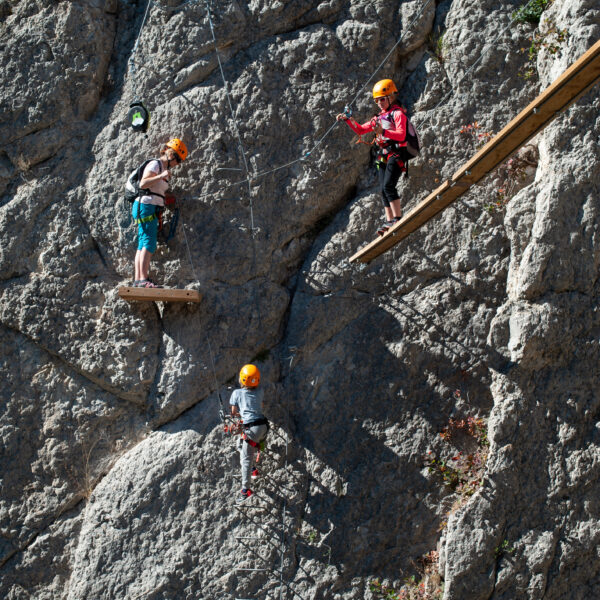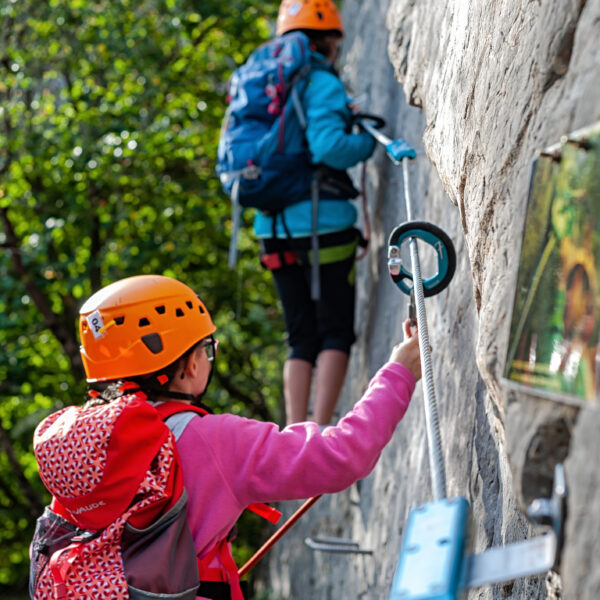
Ammonite Ferrata
Located in the Alpes de Haute Provence,
the via ferrata des Ammonites
The via ferrata takes its name from the ammonite fossils present on the rock and sometimes visible along the route.
Designed and designed for beginners and children over 1.30 m tall, the site can accommodate families and people who wish to discover the practice of via ferrata.
- The duration of the route varies from 1h30 to 2h.
- By reservation, you can rent equipment rental (harness, helmet, lanyards, cursor for the continuous line of sight) on 04 92 68 40 39.
The course is equipped with a continuous lifeline for children whose weight of less than 40 kg does not allow the use of conventional via ferrata lanyards (40 kg – 120 kg). On the vertical sections, reels take over from the continuous lifeline so that the lightest can climb safely.
The Ammonites via ferrata course is classified as easy and offers you an initiatory discovery of the practice of via ferrata. Designed for beginners and families, the course is accessible, fun and easy. With friends, family, children, everyone will experience thrills on this route. But don’t forget to take the time to observe, smell, breathe!
The route begins with a traverse (1) which allows you to familiarize yourself with the progression equipment and the metal elements sealed in the rock that will facilitate your progress. After climbing a short ladder, you reach a first footbridge (2). You then cross two large vertical sections and successively cross the Passerelle (6) and the Pont des Ammonites (7).
At this point in the route, keep your eyes wide open to see two magnificent ammonites in the rock.
After the third bridge, the route continues towards the pirate bridge (8). It is then that you are offered a superb view of the Grand Vallon. Then, climb the Passage des Aromatiques and enjoy a whole range of smells and colors specific to Haute-Provence. Then venture, step by step, on the slab of small steps (10). Now take the Cairo bend (11) to reach the summit … From here, enjoy a 360° view of the valley and watch the via ferratists climb the big sister of the Ammonites’ Ferrata Familia: the Via Ferrata de la Grande Fistoire.
The return to the car park is via a footpath (10 minutes).
The origins of the via ferrata, the Grande Fistoire and the Ammonites
- 1843: The first equipment is installed in Austria on the Doher Daschein track.
- 1869: 400 metres of cables are laid on the ridge connecting the two easy peaks of the Grossglockner, Austria’s highest point (3796 m).
- 1914: The First World War gave a boost to equipment. A number of daring routes were then developed to facilitate the movement of Italian and Austrian troops who were fighting for possession of strategic peaks in South Tyrol. The name Via Ferrata had just been born.
- 1936: The Trentino Mountaineers’ Society in Italy develops the via ferrata delle Bochette in the Brenta massif for sporting purposes, which is still considered a classic today.
- 1960: The hippie decade offers its hours of glory to the Italian via with the development of many very sporty air routes.
- 1988: The first via ferrata equipment is created in France, in Freissinières. Les Vigneaux and Lauzet quickly followed suit.
- 1996: Creation of the Via Ferrata de la Grande Fistoire in Cairo in the Alpes de Haute-Provence. It was then the twentieth route in France at that time.
- 1999: Installation of the Fistoires footbridge, which stretches its 60 metres of narrow planks above the “gas”, the void that is a source of pleasure mixed with fear.
- 2004: A 32-metre Nepalese bridge is added. It provides access to the final overhanging “Great Wall” of 50 metres.
- 2006: La Grande Fistoire, the only active Via in the Alpes de Haute-Provence, is ten years old and has already attracted more than 40,000 enthusiasts. Never overcrowded, this route is the closest to the Marseille metropolis.
- 2008: In October, installation of 3 zip lines (150, 135 and 220 m) with direct return to the car park
- 2019: Birth of the Ammonites via ferrata, a fun initiation and discovery course.
- 2023: promotion of the route: educational panels presenting the flora and fauna on the site.
There are more than 200 routes in France today, mainly in the Alps but also in Corsica and the Pyrenees for more than 500 European Vias.
